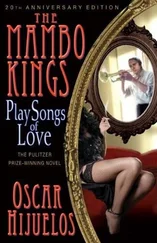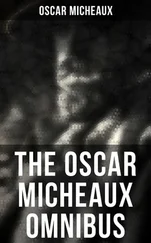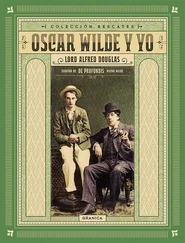But aside from that divine inspiration, it also helped to have a beautiful woman in my life, about whom I will now briefly speak.

One October evening, about a month after I’d arrived at the academy, I’d descended a steep stairway into Trastevere, and there, just before the final steps leading from the Via Scala and the maze of cobblestone streets beyond, I came upon the apparition of a stately Asian princess, perhaps from the court of Kublai Khan, performing the mundane task of walking her little fox terrier. She was rather mysteriously dressed in a cape with cowl and high leather boots, and while I could not quite make out her face, half-hidden under the silken scarf she had wrapped around her mouth against the misty rain, she cut such a spectacular figure that I, deeply under the influence of a Dante lecture at the moment, couldn’t help but ask, “Sei Beatrice?”—“Are you Beatrice?”
But that just made her laugh, and noting my accent, she told me, in quite perfect English, “So you are an American?”
By some miracle (thank you, Lord), I found myself following her into Trastevere, where, among other things, I learned her name — Sojin, or “pearl”—and discovered that my status as a fellow at the American Academy in Rome quite impressed her, as, in fact, it did so many Romans. Later, sitting in a café where the waiters knew and doted on her, I first saw her face and could see just why they — and, as I’d learn, just about every vendor and storekeeper in Rome — did so. Without dwelling excessively on the virtues of her appearance, I will only say that, as I later got to know her and we started going out to places together, it was nearly impossible to walk even a block — in any quarter of the city — without some Italian fellow (and God, half of them were always on the make) coming up alongside us on, foot or on a motorino and sometimes in a car, to make some jovial rascal’s remark to her in Italian along the lines of “Why don’t you lose the four-eyes”—or “the bald guy”—and come and have some fun with me!”
For some reason, though I don’t think it thrilled her, she forgave my flaws (“You are a refreshing change from the usual handsome and superficial Italian men,” she’d told me) and, stranded more or less in a foreign land, far from her home in Seoul, Korea, and perhaps craving the opportunity to end up one day in America, seemed to think me far more intelligent and sophisticated than I happened to be. She loved that I hailed from New York, and the fact that I was a member of the cubani people pleased her as well. While I didn’t conform, in any way, to her notion of what Cubans were supposed to look like, she, having taken the care and effort to read my first novel, out of some mixture of pity and real affection came to idealize me, even if I happened to be going bald and dressed too much, in her opinion, like a beatnik. (To hide my receded hairline, I rarely went anywhere in Rome without wearing a red or black beret, or a baseball cap.) She also liked the fact that I didn’t mind spending money on her — whatever she wanted or needed, it never bothered me to throw her some bucks, especially since I’d have to practically force her to accept the money, as she found it embarrassing, but never so much for her to refuse in the end. Still, I am not so sure what she saw in me, though, in fact, I really did go out of my way to be good to her.
In my eyes, she was something of a James Bond girl, if I may: incredibly sexy — she had posed in various states of undress for a number of Italian magazines, among them Playboy (for the very reason that she never showed me any of them, I’d search for pictures of her in the used magazine shops that were virtually everywhere, in Rome; I never found any). From a well-educated background, she had also an adventurous past. Having run away from a strict boarding school in Korea, she had traveled throughout Asia and, with a German boyfriend, spent a year trying to get rich through the sleight-of-hand export of electronic goods from Hong Kong into India. Somehow, she had ended up in Italy. When we met, she had been keeping company with an older Italian man who wasn’t treating her too well, though she had her own little place, in a sixteenth-century building, off the Via dei Panieri (street of the bakers) in Trastevere. Her downstairs neighbors were three young gay men, two of whom, donning wigs, dressed up as women and worked a trade as oral hookers at the Stazione Termini. They were so convincing as women that I hadn’t the slightest notion that they were men, until one evening when we were visiting, to demonstrate to Sojin some subtlety about the art of love, the prettier girl pulled off the stockings of the other and went down on her who turned out to be a him, even as we were sitting there sipping wine. (“Madonna,” I remember hearing her mutter, under her breath, in embarrassment.)
The Romans were sex crazed in some ways. Up from the academy was a place called the Bar Gianicolo and on Saturday nights, it became a rendezvous point for stylish Roman couples to meet before adjourning to sex parties — orgies, if you like — or so my lady friend told me. I believed her. The few times we went in there together on a Saturday night for a coffee, men always approached her. One evening a couple came by to drop a card on our little bistro table: I don’t think I was part of the deal, but in any case, she, thinking that they, despite their elegant finery, were what the Italians called schifozi —what my mother called gente baja —was not the sort to have ever taken them up on that kind of thing.

She wasn’t very good with money, spending most of it on clothes. At one point, to pay for her tuition in a fashion design school located just off the Piazza Farnese, she worked as a showroom model for designers in the city; another job that kept her in the fashion loop took her down to the Piazza di Spagna, where in a leather goods shop whose name escapes me now, she waited on the wealthiest of tourists, among them, she’d casually mention every so often, the occasional movie star. She drove a Fiat 500, a piggy bank on wheels but commodious enough for us to make a few trips south to Naples, where we scoured the rebranding fashion salons for bargains. Out at Capri, she almost got me drowned by accepting a boat ride into the bay with a couple of Mafiosi, who kept urging me to try water-skiing — one of those fellows, who could not get his eyes off her, had a perpetual erection inside his gold spandex and kept whispering to his chum what seemed to me some rather sinister notions. But if they were devious hoods, they obviously decided that murdering me wasn’t worth the trouble. (For the record, once we made landfall again, I would not talk to her, beauty that she was, for a day or so. On the other hand, looking back on it now, I find it incredibly funny.)
She was really a cheerful and good-natured woman, bright and outgoing: The gardeners and crew at the academy and all the gatekeepers liked her — every week, someone or other would ask me if we were going to get married. (A funny thing: Even Francine du Plessix Gray, a beautiful woman herself, visiting the academy with her husband, the artist Clive Gray, always seemed unable to take her eyes off of Sojin when she happened to be around.) The only people there, in fact, who seemed to resent her were certain of the female academicians. Though Sojin spoke Japanese, Chinese, Russian, German, Italian, French, and English, one such academician always referred to her as the “bimbo.” I’d look the other way — what did I care? We were having a nice time together, no matter what we happened to be doing. After all, it was all part of the dream I seemed to be living in Italy, whose lovely and quite passionate energies slipped bit by bit into my writing, while my own affections for that woman, later to be displaced and abused, seemed so real and something that I then believed would never be forgotten.
Читать дальше














